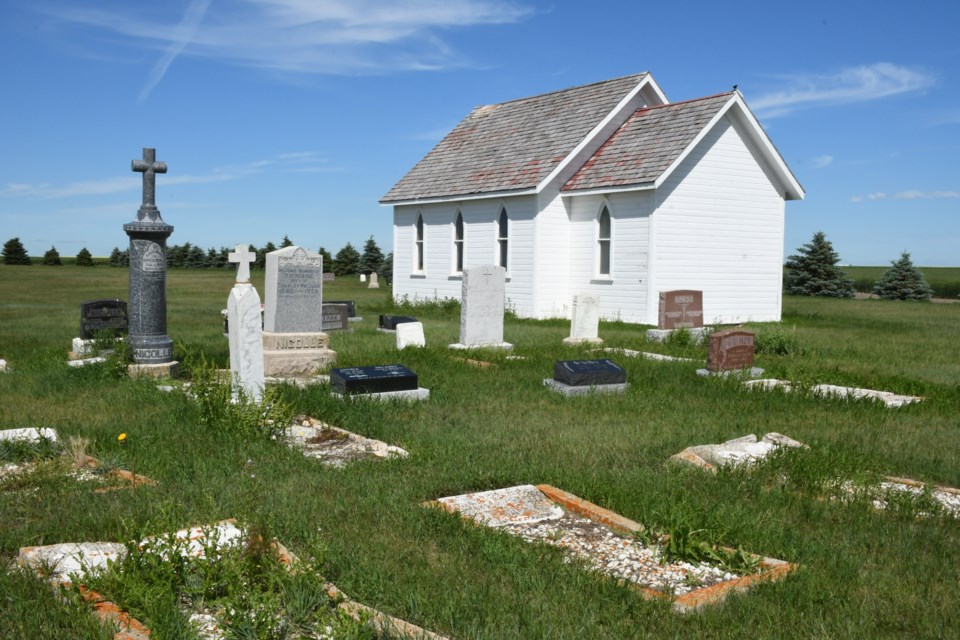When you take Highway 202 out to Buffalo Pound Provincial Park, you will come across a quaint 122-year-old country church that is one of the earliest churches build in the district.
St. Columba Anglican Church is a municipal heritage property situated on a 0.8-hectare parcel of rural land roughly six kilometres east of the Village of Tuxford, in the Rural Municipality of Marquis. The property features a small, wood-frame church that the early pioneers build in 1898.
The heritage value of the church lies in its status as one of the earliest churches constructed in the area and as the oldest still standing. As was common in Saskatchewan’s homesteading communities, members of the Church of England who had settled in the area held their first services in private homes. Soon, though, they had raised sufficient funds to build a church on a parcel of land that one of the congregations had donated.
Bishop John Grisdale consecrated the church on Nov. 2, 1898. The building was named after St. Columba, the home church of an English supporter of the church building fund.
The parishioners held regular services at the church until 1959, when the district’s Anglican congregations amalgamated in a church in Moose Jaw. Today, St. Columba still hosts occasional weddings and baptisms, while the cemetery is still used. The descendants of the early congregants maintain the building and grounds as a value symbol of community heritage.
Some character-defining features of St. Columba Anglican Church include the fact the elements express the church’s historical integrity, its age, and long association with the community, including its wood-frame construction, clapboard siding, shake shingles, wood flooring, trim, wainscoting and ceiling panelling. Other features include the headstones in the churchyard cemetery and the church’s location on its original site.
Some elements that reflect the building’s role as a rural church include its simple form, the rooftop belfry, pointed-arch windows, and interior space consisting of nave, vaulted ceiling and raised chancel.




